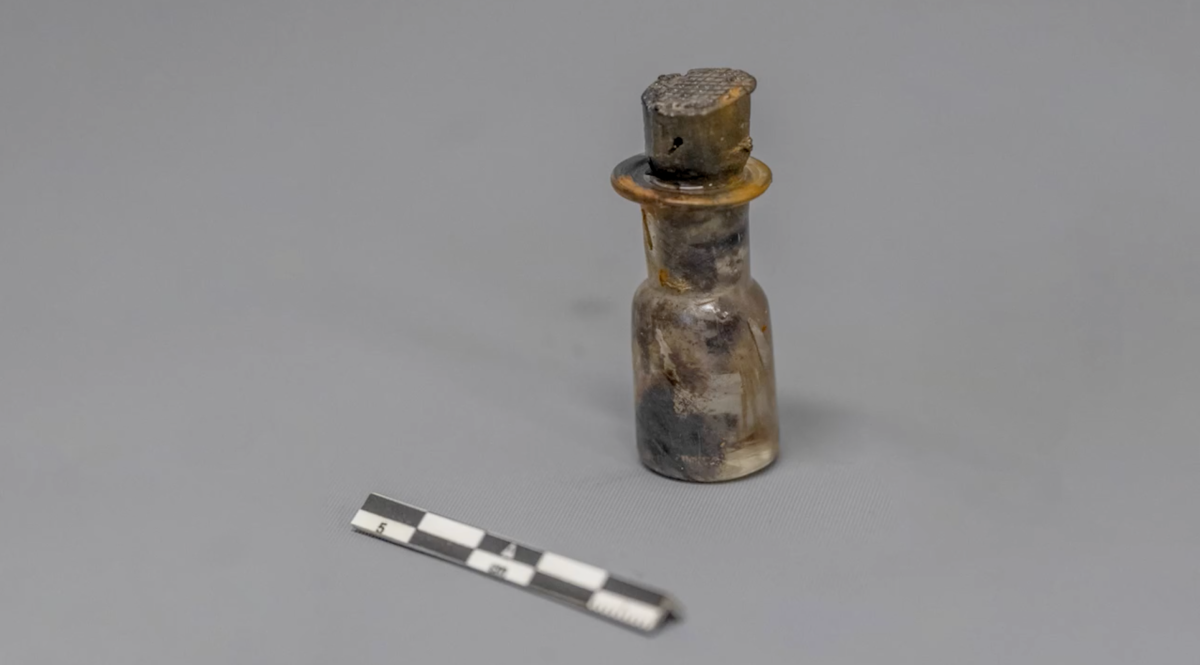Underwater archaeologists with Parks Canada, working in close collaboration with an Inuit historical society, have found a treasure trove of artifacts from the lost Franklin expedition at the site of two shipwrecks in northern Nunavut. The items recovered include pistols, coins and an intact thermometer.

The HMS Erebus and HMS Terror were the two ships that made up the ill-fated Franklin voyage of 1845, helmed by Captain John Franklin, who was tasked with charting a course through the Northwest Passage.
All 129 people involved in the expedition perished. And now, their ships lie in a permanent watery grave off the coast of King William Island, in the traditional lands of the Nattilik (or Nettsilik) people.
For more than a century and a half, the Western world had no idea what happened to the Franklin expedition, when the ships didn’t return to the United Kingdom. Dozens of search and rescue missions over the decades since failed. The lost Franklin expedition became an enduring mystery.
But the answers that Britain, and later Canada, were looking for all along already existed. They were present in the oral histories and traditions of the Nattilik people, who knew almost exactly where the shipwrecks were located.
From the late 1990s to the early 2010s, Parks Canada worked closely with late Inuit researcher Louie Kamookak, who resided in the community of Gjoa Haven on King William Island, to find the lost ships.
“From the outset, the objective was to use both Inuit oral history and Canada’s best technology to search for the shipwrecks,” Alan Latourelle, former CEO of Parks Canada, said at the time.
In 2014, the HMS Erebus was found. Two years later, the researchers would also find the HMS Terror. The locations of both shipwrecks matched the site described in Inuit oral histories dating back to the 1850s.
Since the rediscovery of the shipwrecks, archaeologists have been busy excavating and collecting artifacts from the fabled expedition.
Last summer, underwater archaeologists conducted 68 dives over a 12-day period, snapping thousands of high-quality images and bringing items that hadn’t been seen in over 150 years to the surface. Their findings were announced in a press release this week from Parks Canada.
Pistols, coins, medicine bottles and other military items were found in a chest located in the forecastle area, where most of the crew lived, on the HMS Erebus.
An officer’s cabin, believed to be the quarters of Second Lieutenant Henry Dundas Le Vesconte, held an intact thermometer, a leather book cover, a fishing rod and brass reel, and a parallel ruler, which is used in navigation.
In an area believed to be the cabin of Third Lieutenant James Fairholme, archaeologists turned up a collection of unidentified fossils. Similar fossils were found during the dives carried out in the 2022 season.
A leather shoe, storage jars and a sealed pharmaceutical bottle were also found in the pantry of Captain Franklin’s steward.
Images of the artifacts were shown in a video posted to the Parks Canada Facebook page.
“The Franklin expedition remains one of the most popular mysteries from the nineteenth century. However, thanks to the important work of Parks Canada and Inuit partners, pieces of this mysterious puzzle are being retrieved allowing us to better understand the fascinating events of this incredible expedition,” said Steven Guilbeault, mister of environment and climate change.
The recovered artifacts are jointly owned by Parks Canada and the Inuit Heritage Trust. The site of the shipwrecks is co-managed by Park Canada and the local Nattilik Heritage Society, which administers an Indigenous Guardians program to protect and monitor the site and further integrate Inuit knowledge into site operations.
- Premier Moe responds to Trudeau’s ‘good luck with that’ comment
- Drumheller hoping to break record for ‘largest gathering of people dressed as dinosaurs’
- Planning a summer trip to Quebec’s Îles-de-la-Madeleine? You’ll have to pay up
- As Canada’s tax deadline nears, what happens if you don’t file your return?
The artifacts will be studied at a Parks Canada facility in Ottawa where they will undergo conservation treatment before being returned to the Nattilik Heritage Society for display in Gjoa Haven.
Archaeologists also took a series of scientific measurements at the site and are working to produce an accurate 3D model of the shipwrecks to understand how the ruins are changing over time. The HMS Erebus rests under just 11 metres of water, making it susceptible to stormy conditions and climate-change-related threats.
William Beveridge, the executive director of the Inuit Heritage Trust, said the dives represented “another fruitful field season at the Franklin Wrecks,” and gave recognition to the Nattilik Heritage Society and its Guardian Program.
“We are happy to see Louis Kamookak’s work continuing to develop and the role of Inuit in the project continue to grow,” Beveridge added.













Comments